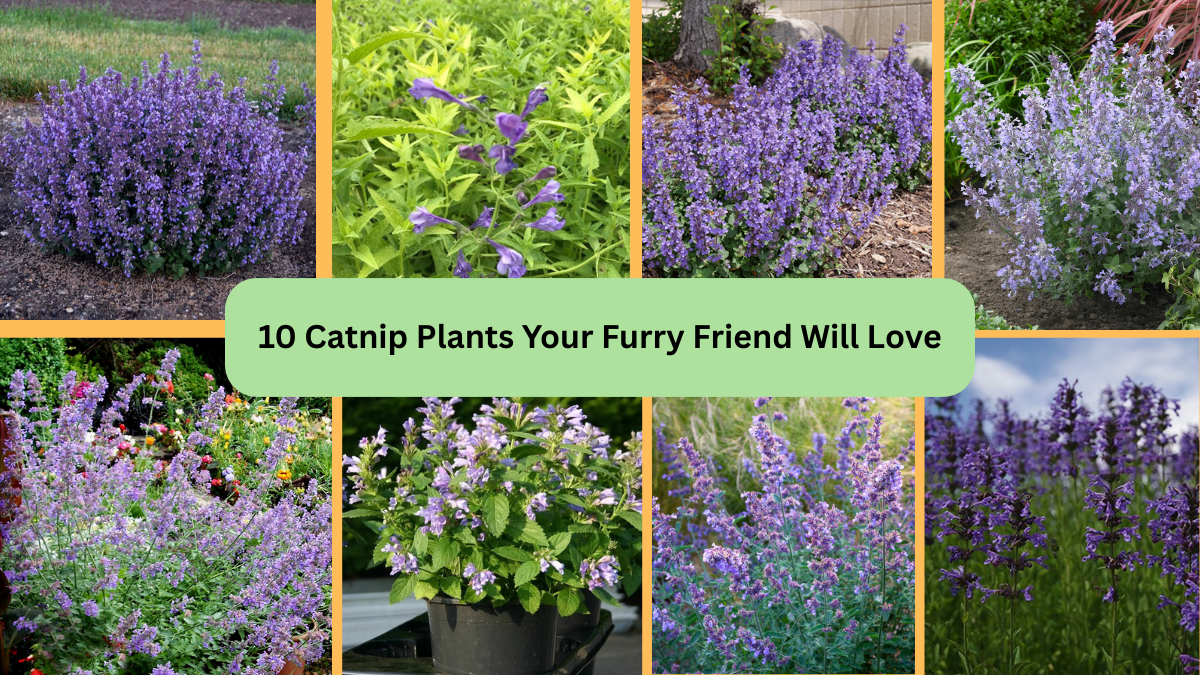If you’re a cat owner, you probably know the magical effects of catnip. Scientifically known as Nepeta cataria, catnip belongs to the mint family and contains a natural oil called nepetalactone. This compound acts as a feline attractant, triggering playful, euphoric, and sometimes downright silly behavior in cats. While the classic catnip plant is the most famous, there’s a wonderful variety of other Nepeta species and relatives with similar appeal.
In this article, we’ll introduce you to 10 catnip plants your furry friend will love — each offering unique scents, textures, and garden value.
1. Nepeta cataria (Common Catnip)
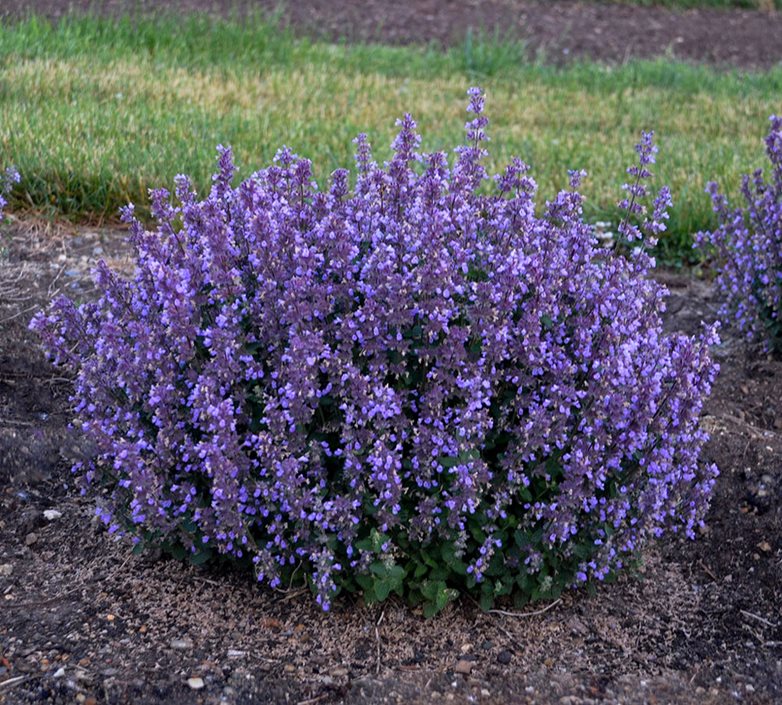
The classic and most famous catnip, Nepeta cataria is the go-to plant for every cat lover. Its soft, gray-green leaves release an intoxicating scent when crushed or brushed, making it irresistible to most cats. Whether you grow it in your garden or keep it in a pot indoors, this hardy perennial thrives in full sun and well-drained soil. Besides entertaining your pets, it also produces small, white to pale lavender flowers that attract pollinators, making it both a pet treat and a garden-friendly plant.
2. Nepeta faassenii (Catmint)
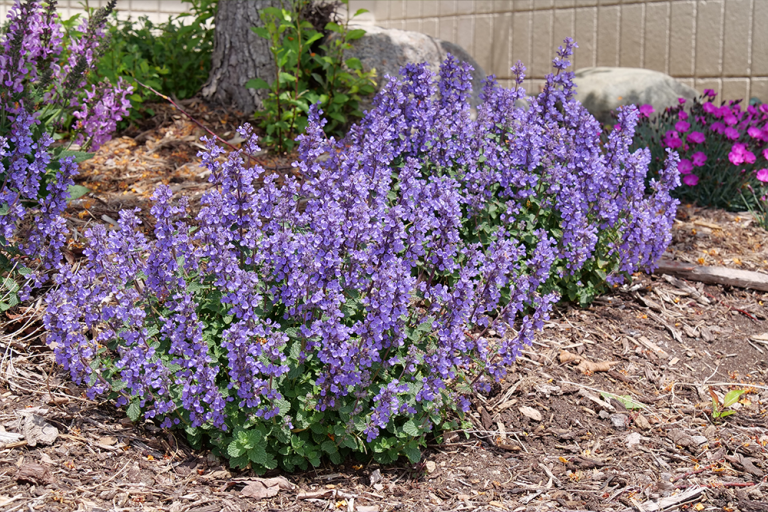
Often confused with common catnip, Nepeta faassenii or Catmint offers a similar appeal with a slightly milder effect on cats. This low-growing, mound-forming perennial features silvery-green foliage and masses of small, lavender-blue flowers. Its fragrance is more subtle than catnip, making it perfect for gardeners who enjoy the look and scent without overwhelming their feline friends. Catmint is drought-tolerant, deer-resistant, and attracts bees and butterflies, making it a multifunctional addition to flower beds and herb gardens.
3. Nepeta racemosa (Dwarf Catmint)
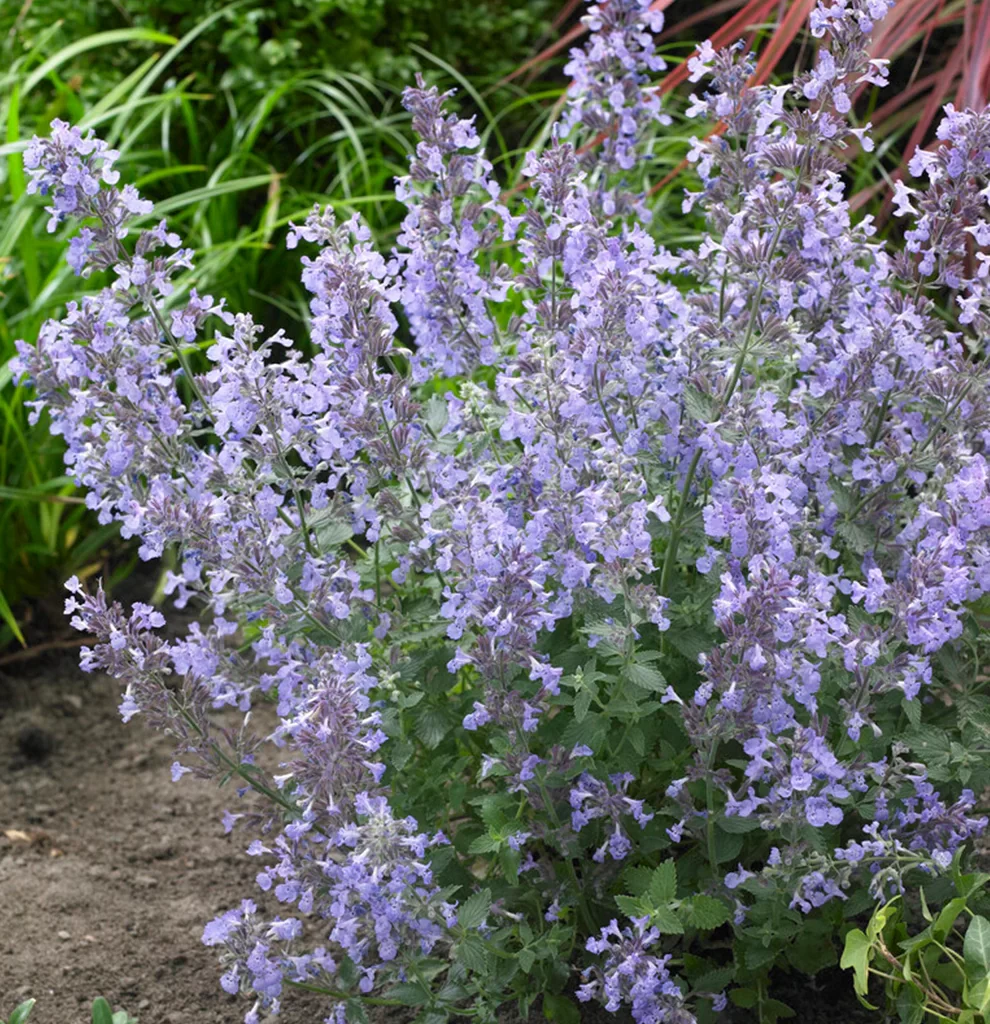
For those with limited space, Nepeta racemosa is a compact, cat-attracting alternative. This smaller species still produces plenty of soft, aromatic leaves and dense spikes of bluish-purple flowers. It grows beautifully in containers or small garden beds, offering your cat an enticing spot to rub, roll, and nibble. The plant’s neat, tidy growth habit makes it ideal for edging pathways or borders. It blooms from spring through summer and pairs well with roses, ornamental grasses, and other sun-loving perennials.
4. Nepeta ‘Walker’s Low’
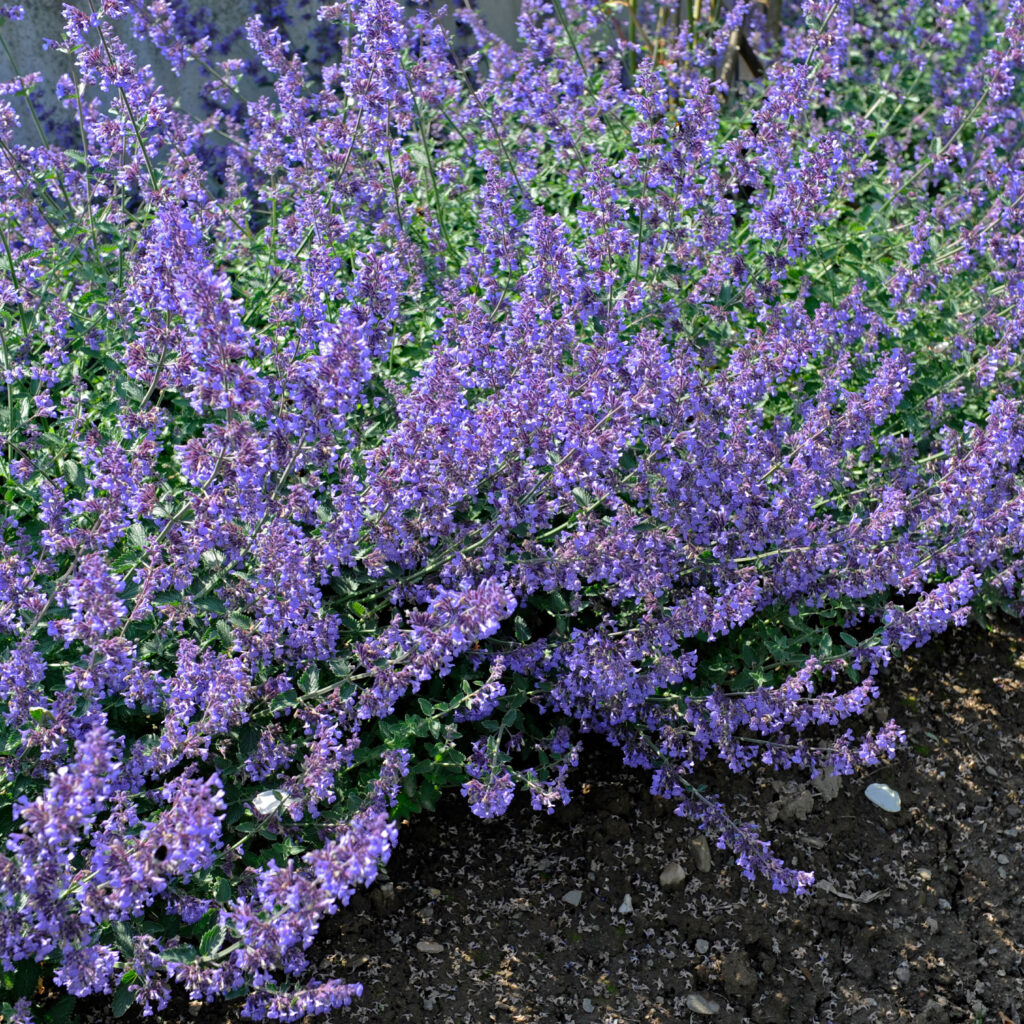
A hybrid catmint cultivar, ‘Walker’s Low’ is adored by cats and gardeners alike. Despite its name, it grows into a generous, sprawling mound covered in bluish-purple flowers from early summer to fall. The aromatic, gray-green foliage offers a mild catnip effect, enticing your pet to lounge and play around its base. It’s also a favorite for pollinators like bees and butterflies. Hardy, heat-tolerant, and low-maintenance, this plant is ideal for cottage-style or Mediterranean-themed gardens where both you and your cat can relax.
5. Nepeta grandiflora (Giant Catmint)
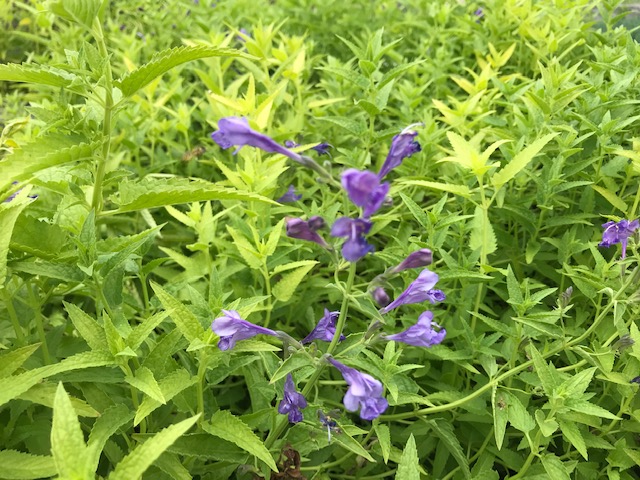
If you’re looking for a bold, fragrant feature in your garden that your cat will adore, Nepeta grandiflora is an excellent choice. Known for its larger leaves and flowers, this vigorous perennial releases a strong, sweet scent that’s highly attractive to felines. It forms an upright, bushy clump of foliage topped with clusters of violet-blue flowers in early to mid-summer. Perfect for larger garden spaces, it also makes an effective pest deterrent as its aromatic oils naturally repel aphids and mosquitoes.
6. Nepeta sibirica (Siberian Catmint)
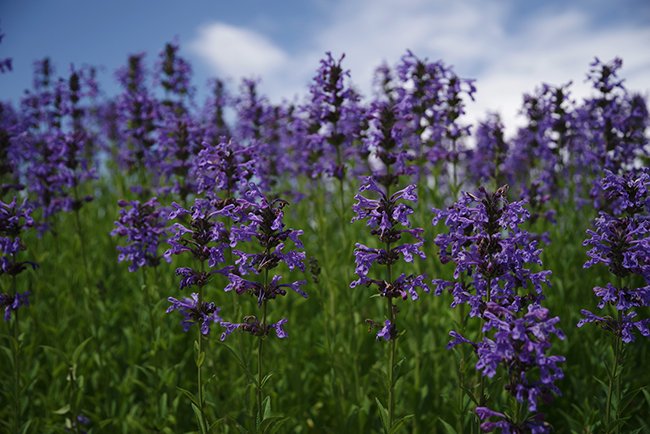
Known for its cold-hardiness and tall, elegant spikes of lavender-blue flowers, Nepeta sibirica is a beautiful, functional plant that cats enjoy. Its aromatic leaves provide the classic catnip experience, while its more upright growth habit and showy blooms make it an attractive addition to mixed borders. Cats love lounging under its leafy stems and nibbling on its foliage. Blooming from late spring to early fall, it’s also a magnet for bees, adding a lively, buzzing element to your garden sanctuary.
7. Nepeta mussinii (Persian Catmint)

Another favorite in both traditional and modern gardens, Nepeta mussinii boasts a neat, clumping growth habit and abundant, tubular, bluish-lavender flowers. Its soft, grayish-green leaves release a potent scent that most cats find irresistible. Compact and resilient, this plant performs well in rocky soils, herb gardens, and as a fragrant border along paths. It’s drought-tolerant and deer-resistant, offering low-maintenance beauty with the added bonus of feline-approved foliage for rolling and chewing.
8. Nepeta ‘Six Hills Giant’
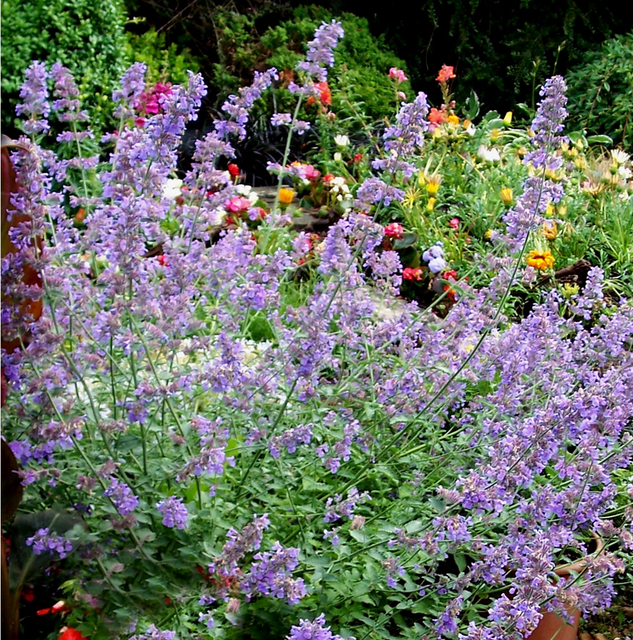
As its name suggests, ‘Six Hills Giant’ is one of the tallest and most robust catmints available. Reaching up to 3 feet in height, this showy plant features dense spikes of lavender-blue flowers and highly aromatic leaves. The potent scent attracts cats from across the yard and invites them to lounge in its shade or nibble the leaves. A long-lasting bloomer, it flowers from late spring through early fall and thrives in full sun, creating a paradise for both cats and pollinators.
9. Nepeta subsessilis (Japanese Catmint)
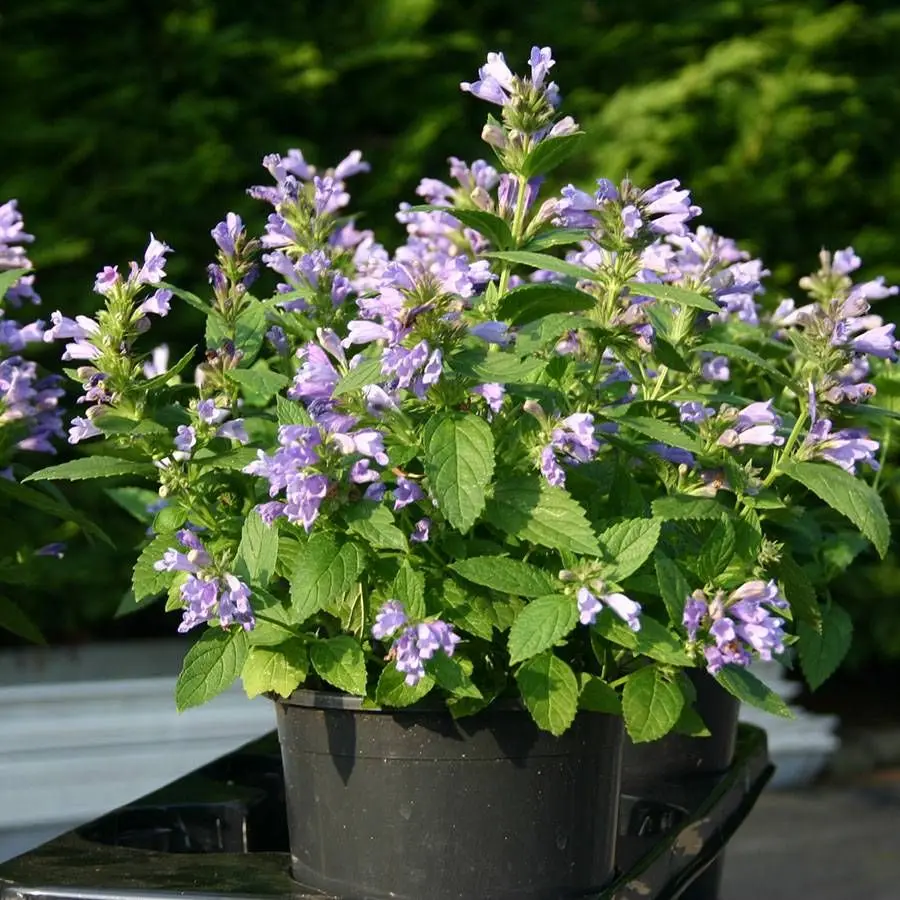
With slightly larger, brighter flowers than many other species, Nepeta subsessilis is a lush, upright-growing catmint with a mild catnip effect. Native to Japan, it prefers moist, well-drained soil and partial shade, making it suitable for areas that might be too cool or shady for other varieties. Cats enjoy brushing against its soft, aromatic leaves and lounging beneath its stems. Its eye-catching blooms and feline appeal make it a perfect choice for shady patios or mixed perennial beds.
10. Nepeta x faassenii ‘Junior Walker’
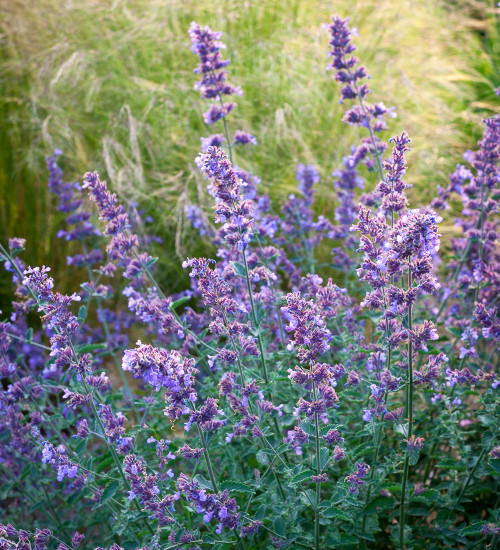
A compact, low-growing cousin of the popular ‘Walker’s Low’, ‘Junior Walker’ offers the same silvery-green foliage and clouds of soft lavender-blue flowers in a smaller package. Perfect for container gardens, small patios, and border edges, this resilient plant emits a sweet, mild scent that your cat will adore. It’s long-blooming and drought-tolerant, providing months of fragrant flowers and fun for your pet. Plus, its neat form and versatility make it an easy addition to both traditional and contemporary landscapes.
